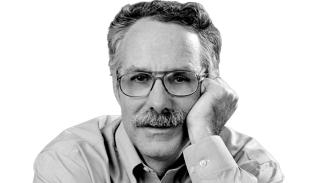
[OP-ED]: Should the Fed run the economy ‘hot’?
MORE IN THIS SECTION
Nine years after Bear Stearns’ collapse -- the first sign that the economy was in serious trouble -- the recovery seems to have healed the Great Recession’s worst wounds. Job creation has been steady. Payroll jobs total 145.8 million, up about 16.1 million from the slump’s low point and 7.5 million from the pre-recession peak.
There’s also upbeat news on wages. In a new report, economist Elise Gould of the left-leaning Economic Policy Institute (EPI) reports that median wages, adjusted for inflation, grew 3.1 percent between 2015 and 2016 -- a feat that, if repeated for a decade, would mean an increase of a third. (The median wage is the one exactly in the middle of all wages.)
“What stands out in this last year of data is that the economic recovery appears to finally be reaching a broad swath of American workers,” writes Gould. “In fact, wage growth in 2016 was more rapid for middle- and low-wage workers than for those at the top.” The unemployment rate, 4.7 percent in February, is close to what many economists think is “full employment.”
And yet, stubborn problems linger. Corporate managers, small-business owners and consumers all remember the traumatizing effects of the financial crisis and Great Recession. To protect against a repetition, they’ve become more risk-averse. Similarly, some of the recovery’s “good news” needs to be qualified.
Consider wages. Recent increases for middle-income workers mostly represent catch-up from losses suffered in the recession. The table below reflects data in Gould’s report. It shows the median hourly wage for men and women in four recent years, corrected for inflation.
MEDIAN HOURLY WAGES
Men Women
2000 $19.44 $15.22
2007 $19.45 $15.90
2015 $19.18 $15.87
2016 $19.33 $16.08
As can be seen, men’s median hourly wage -- not counting fringe benefits -- is slightly below its levels in 2000 and 2007, the peak year before the recession. Women’s median wage is up about 6 percent since 2000 and slightly more than 1 percent since 2007.
(A note for policy wonks: You will notice that for 2016 the increase in the median wage for all workers, men and women combined, is greater than the increase for either men or women separately. The likely explanation: The composition of the labor force changed, favoring higher-paid men who pulled up the overall median.)
The recovery, though encouraging, is certainly no economic panacea. Mounting inequality remains a big issue. From 2000 to 2016, the best-paid 5 percent of men achieved a 30 percent wage increase, according to Bureau of Labor Statistics data analyzed by Gould. For women, the comparable gain was 24 percent.
Another glaring problem has been the dismal performance of productivity. To remind: Productivity is economic jargon for efficiency; without improved productivity, broad gains in living standards are impossible. From 1948 to 2016, productivity gains averaged 2 percent annually; but since 2012, gains have been less than 0.4 percent a year. If continued, and combined with rising inequality, this suggests stagnant living standards or worse for millions.
With unemployment low and price pressure rising, the Federal Reserve usually increases interest rates to slow the economy and pre-empt higher inflation. This is happening. Later this week, the Fed is expected to raise the so-called Fed funds rate to 1 percent. Many economists expect two more comparable increases in 2017, bringing the rate to 1.5 percent.
But might the Fed be oversensitive to inflation? Other economists think so. Writing last week in The Wall Street Journal, Jason Furman -- recently President Obama’s chief economist -- urged the Fed to run the economy “a little hotter, driving up wage growth and bringing more people back into the workforce.”
Economist Josh Bivens of EPI likewise favors a “high pressure economy” that would lead to bigger wage gains and stronger demand. But rather than feeding mostly into higher inflation, these pressures would “spur employers to boost capital investments and other drivers of productivity growth,” which would offset wage and price increases.
In other words: The Fed should give the economy “room to run” -- meaning fewer interest-rate increases. Perhaps. But what seems sensible also could be wishful thinking. The lesson of the double-digit inflation of the late 1970s and early ‘80s is that, once higher inflation captures popular psychology, it takes a crushing recession to purge it. That’s probably still true.







LEAVE A COMMENT:
Join the discussion! Leave a comment.